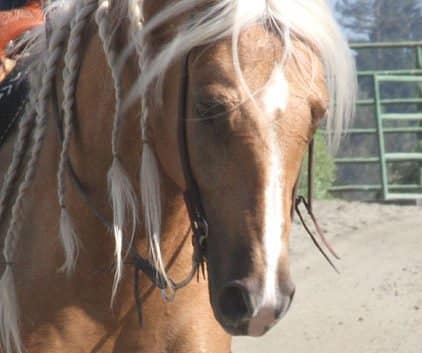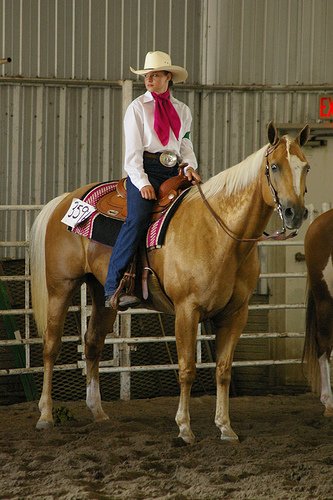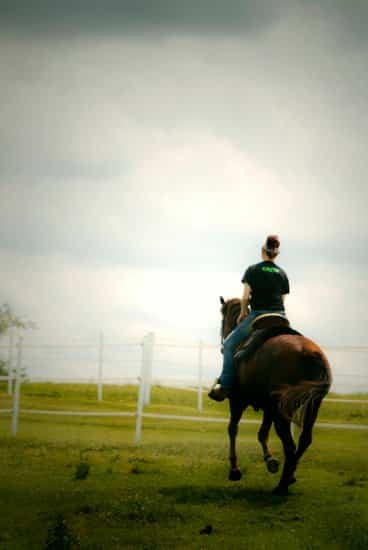
The western backup is one of the maneuvers that is seen as simple by so many, but actually takes quite a bit of training to get all the pieces in place if you want to achieve that deep, round, backup that scores high in the western show pen. The hardest part isn’t the training of the backup itself, but rather the building blocks that are needed before training for the backup begins.
The Building Blocks for the Backup
There are several key components that your horse must know before you attempt to teach the backup.
- Your horse needs to have a good topline. It does not have to be perfect, but a hollow-backed horse will not be able to execute a proper backup.
- He needs to be soft in the poll. A horse that is stiff, especially one that is stiff in the poll, will brace and not give to the pressure properly.
- Your horse needs to be straight through his entire body. A horse that is not straight will back crooked and fall apart under you. He will not be able to collect himself properly and hold that collection together throughout the maneuver.
- The horse must be soft enough in the mouth to be ridden in a smooth snaffle. If the horse can’t be ridden in a smooth snaffle, he is still too stiff and is not ready for this.
Teaching the Backup
There aren’t actually that many steps to teaching the backup if you’ve done your homework and the horse has a proper foundation.
Too many people think that backing up is done by leaning back and pulling back on the reins. This may get your horse to back up a few steps, but leaning back too far (or water skiing as I like to call it) shifts your weight too far back, forcing your horse’s back to hollow and disallowing proper collection.
[bctt tweet=”Leaning back and pulling forces your horse’s back to hollow, disallowing a properly collected backup.” username=”EW_Blog”]
Think of it like this: imagine there is a brick wall in front of your horse’s nose. If you add forward motion when your horse’s nose is against a brick wall, what will happen? He won’t be able to go through it so he will have to back up.
Pick up on the reins and take contact, gently but firmly – set your wall. Gently apply cues for forward motion. Let him run into your hands (the wall). As soon as he gives you one step back, release. It takes timing and feel.
Troubleshooting
This is where the softness some in. If your horse stiffens in the poll or braces against your hands, this will not work. He will grab the bit, root his nose, and you will just create more problems. If he is not straight in the body, his hind end will swing out the side and it will be a big mess.
This is the ultimate test of all your other training. Any hidden stiffness will show up when attempting this exercise. If that happens, take a step back, spend some time working the stiffness out, then com back and try again.
Do not ask for more than a step or two at a time for the first few weeks. A big mistake I often see is asking too much too soon. Your horse should get to the point that he is darn near perfect at one or two steps and he will actually start offering three or four steps. Take what is offered, reward him, but do not demand more. After a few weeks, start asking a little bit more.
As long as you don’t push too hard too fast, your horse will keep offering more. A truly soft and willing horse will only need the gentlest of encouragement to give more. This is where heart and try come in. A horse without heart is a horse that does not want to learn and work for you. If you’ve got one of those, you need to go read my article on try because your must teach your horse to learn again before you can get him to reach his fullest potential.
Photo by Just chaos









